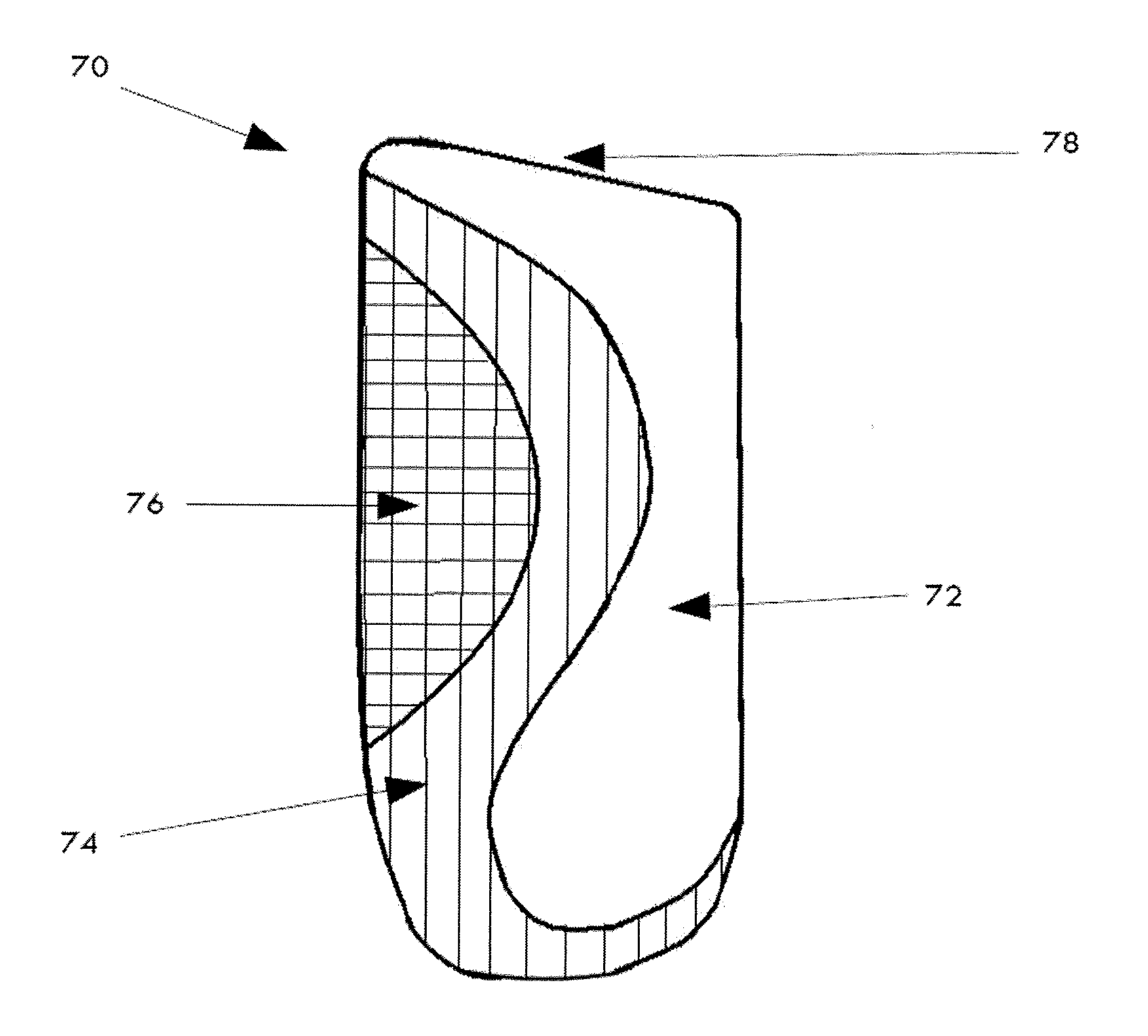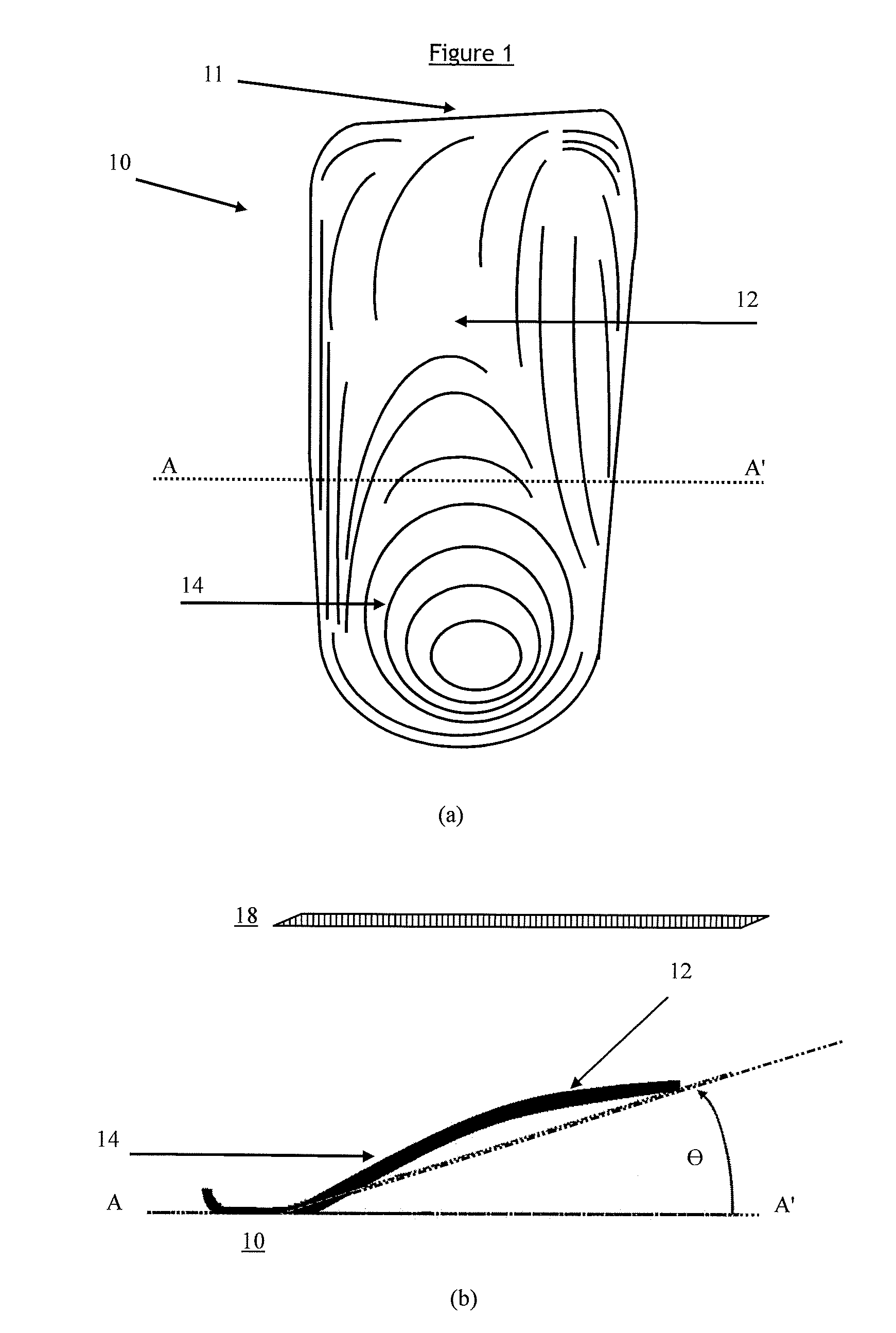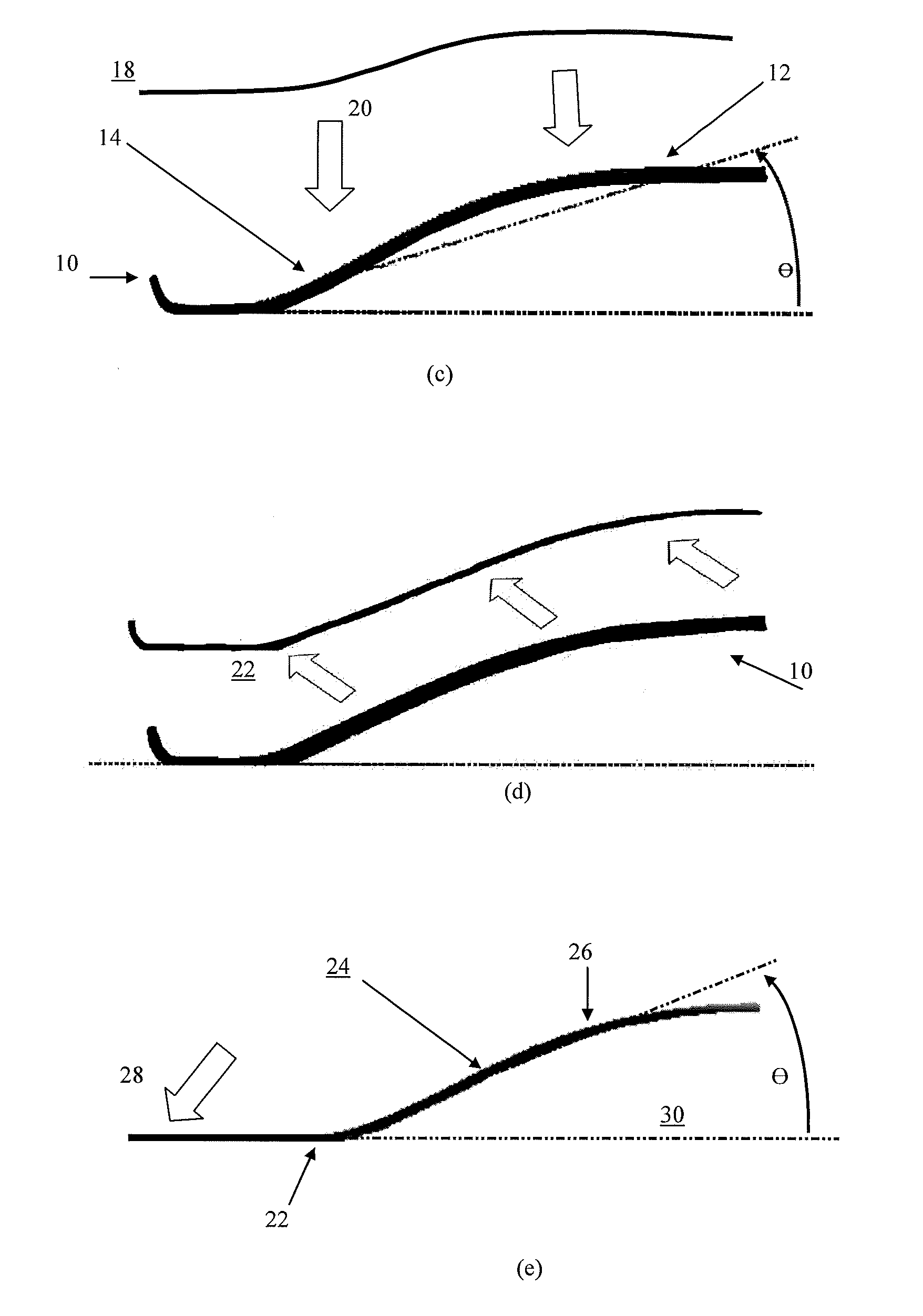Orthotic Device and Method of Manufacture
a technology applied in the field of orthotics and manufacturing methods, can solve the problems of uncomplete, uncomfortable and probably unwearable drop-off of the foot at the front (or toe end), and achieve the effect of reducing the surface area of the peripheral zon
- Summary
- Abstract
- Description
- Claims
- Application Information
AI Technical Summary
Benefits of technology
Problems solved by technology
Method used
Image
Examples
Embodiment Construction
[0083]The initial step in the manufacture of an orthotic device that replicates the therapeutically functional contours of an existing orthotic device according to the invention is to obtain or provide an existing orthotic that has a surface shape defined by the desired therapeutically functional contours. The existing orthotic then is used as a template in the manufacture of the new device in which the therapeutic surface is replicated in the contours of the new device. This method therefore is not designed to reproduce a replica of the existing orthotic device as a whole: It is concerned with reproducing the shape of the therapeutic functional dorsal surface only. This replicated surface can then be combined with a set of structural features designed to suit the comfort and footwear requirements of the user. These features may be introduced to improve on the comfort to the user over that of the existing device. They may alternatively, or in addition, be introduced to customise the...
PUM
 Login to View More
Login to View More Abstract
Description
Claims
Application Information
 Login to View More
Login to View More - R&D
- Intellectual Property
- Life Sciences
- Materials
- Tech Scout
- Unparalleled Data Quality
- Higher Quality Content
- 60% Fewer Hallucinations
Browse by: Latest US Patents, China's latest patents, Technical Efficacy Thesaurus, Application Domain, Technology Topic, Popular Technical Reports.
© 2025 PatSnap. All rights reserved.Legal|Privacy policy|Modern Slavery Act Transparency Statement|Sitemap|About US| Contact US: help@patsnap.com



